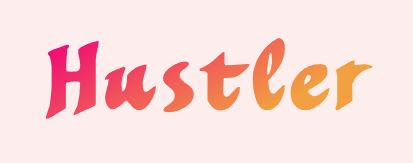As class sizes continue to grow, students are struggling and often being left behind academically if they aren’t on track with their peers. Small Group Instruction, however, is becoming increasingly more popular with educators so they can provide a more individualized approach to the material.
We sat down with educators at the KIPP Detroit Imani Academy (KDIA) to learn more about Small Group Instruction, as well as how it’s being implemented in their classrooms today.
KIPP Detroit Imani Academy is an open-enrollment, public, tuition-free charter school that is part of the renowned Knowledge Is Power Program (KIPP), a national network of tuition-free public schools educating 120,000 students in grades Pre-K through 12 across 21 states and Washington, DC.
“According to research, only about 75% of a class is going to ‘get it’ on the first delivery of the lesson. So you already know that not everyone is going to fully understand the material you’re presenting,” explained Candace Rogers, KIPP Detroit CEO/Superintendent. “Small Group Instruction allows teachers to sift through and understand which kids are struggling and with what specific concept, group them together, and give every kid in that classroom personalized instruction.”
What is Small Group Instruction?
Small Group Instruction is a strategy teachers are using to help drive home concepts to students in a way that’s most accessible to them, especially at a young age.
This is very different from group work, in which students are paired to work as a team to complete one task together. Small Group Instruction, on the other hand, allows for educators to work on individual needs and progress. Once students are placed in their Small Groups with like-minded students, teachers can then focus on the rigor and skillset that each individual student within that group needs.
“Small Group Instruction is almost explicitly re-teaching content to students but at their individual levels,” explained kindergarten teacher Alyssa Fritsch. “Teachers should use a data-driven approach and find commonalities amongst students to form their groups. From there, the structure can be different for all levels, using the data to show what needs to be retaught in each small group or even if a multi-sensory approach is needed with certain groups.”
In her classroom, Fritsch uses Small Group Instruction to help students with reading, placing students into three groups based on those who need intensive remediation, basic remediation and those that are at grade level.
In the intensive remediation group, Fritsch works with students still struggling with their phonological skills by practicing putting sounds together. At the remediation level, students may know their sounds but are struggling to produce words. Fritsch incorporates exercises doing faster segmenting and blending of words or focusing on different sounds by swapping out letters to produce a new sound. Students in the grade level group then take the same processes one step further, often working with “nonsense words” that aren’t necessarily words or used often, breaking apart words and putting them into print to show a deeper understanding of the content.
At the first grade level, educator Calvin Hobbs follows a similar structure. He groups together students who may need more one-on-one practice still mastering sounds and sound pairings. A middle group works with blending and segmenting words, while a higher group works at grade-level to begin reading and spelling with the skills they have built on.
As students get older, it can be more difficult to implement regular Small Group Instruction due to time constraints, Rogers explained.
“At higher grade levels, classes are often 50 to 60 minutes long, and if a class is only 50 minutes, you can’t take 30 of those minutes just working with six kids,” she added. “That’s usually why we see this more at the lower grade levels.”
How should you go about creating Small Groups?
To ensure students are grouped appropriately, the teachers at KDIA group students using a data-driven approach.
In her classroom, Fritsch relies heavily on phonics assessments given to her kindergarteners to see out of 10 words how many each student is able to read, for example. First grade educator Calvin Hobbs often looks at data in 30-day segments to see how students are progressing.
Both rely heavily on the idea that these groups should be fluid, allowing students to move around groups based on their level of comprehension of the concepts at hand.
“The groups should remain fluid so students can change in and out as they gain more mastery,” Hobbs said. “We start off with six groups so the number stays small enough where each kid has at-bat opportunities, and kids should be grouped together who still need to work on the same skill so we’re not overreaching with something and allowing each student to have that space.”
Once the groups are set, the students break into their small groups daily, and the educators will check in with those groups multiple times throughout the week. In those touchpoints, the educator will have the opportunity to work in a more intimate setting with each of the students, even one-on-one if needed.
“It’s really important to meet students where they’re at, not shame them,” Fritsch explained. “It’s up to us to make sure they’re each working on what they need to work on and trying their best best on assessments so we can know how to best help each student.”
To learn more about KIPP Detroit Imani Academy, visit their website at kippdetroit.org/kipp-detroit-imani-academy/.
from Metro Parent https://ift.tt/NkIhCbv










0 comments:
Post a Comment